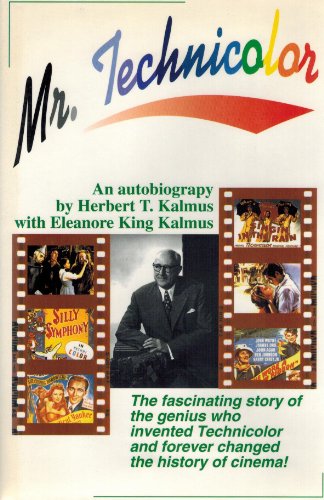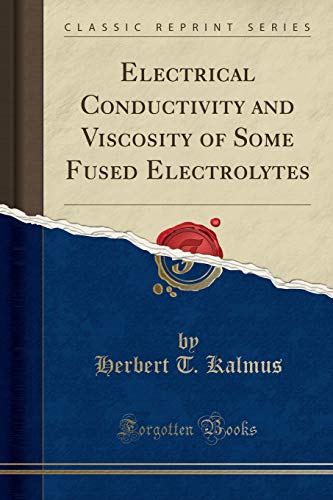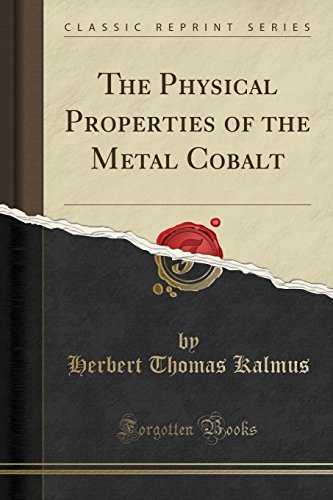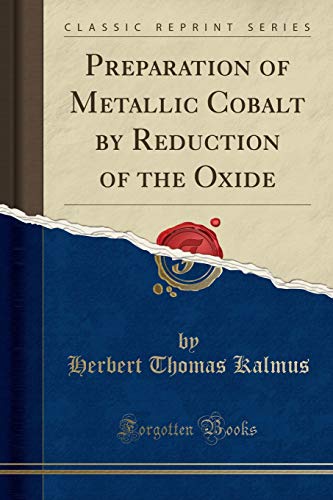Background
Herbert Thomas Kalmus was born on November 9, 1881 in Chelsea, Massachusetts, United States, the son of Benjamin G. Kalmus and Ada Isabella Gurney, both professional musicians.



(Kay Harmon, managing director of Technicolor Corporation'...)
Kay Harmon, managing director of Technicolor Corporation's British facility wrote to Dr. Herbert T. Kalmus upon learning of his plan to write an autobiographical account of the development of Technicolor: ...You have created a new art form and I acclaim it so and reject any accusation of vanity. You have created a new and fascinating world of colour that can be used in the arts and sciences to reveal the texture of life, to teach, to educate and to inform. But most important is its adaptation to an art form. You, more than any man living, have accomplished that. For tens of millions of people you have held a mirror up to nature and brought colour into their lives and into their world... ...The title "Mr. Technicolor" is just about right. Give your heart the fluid of your thoughts and let your intellect drive your pen. Open the doors to intimacy. Tells us what influenced your thoughts and actions, what created your lust for life... I suspect your material success was tempered with a will not to submit to a problem unsolved... that your joy or pleasure came from the solution itself. Tell us these things. This, then, is Dr. Kalmus' attempt to answer the plea, detailing the happenstance as well as the single-minded perseverance that led to the fulfillment of his life-long quest to bring color to the motion picture screens of the world. For reasons known only to "The Doctor," as Herbert Kalmus was affectionately known, he chose to leave out of his account any mention of his first marriage to Natalie Kalmus. Natalie played a major role in his life for decades both as the color consultant for Technicolor and as his adversary in what became a legendary divorce battle. In the closing chapters of this book Doctor's second wife, Eleanore King Kalmus, undertakes the task of filling in the missing details of his unusual relationship with Natalie. In a letter contemplating her husband's life work and Natalie's roll in it, Eleanor writes: I've been swirling around in my mind a tag line such as: "Great scientist that he was, he once said yes to a woman and suffered 50 years in and out of the courts."
https://www.amazon.com/Mr-Technicolor-H-Ph-D-Kalmus/dp/1882127315?SubscriptionId=AKIAJRRWTH346WSPOAFQ&tag=prabook-20&linkCode=sp1&camp=2025&creative=165953&creativeASIN=1882127315

(Corrected second edition of the classic work. Chapter tit...)
Corrected second edition of the classic work. Chapter titles are ...(1) Introduction ...(2) Literature on the Electrodeposition of Cobalt ...(3) Experiments on the Electrodeposition of Cobalt ...(4) Method and Arrangements for Plating ...(5) Preparation and Use of Electrodes ...(6) Preparation of Salts ...(7) Solubility of Cobalt and Nickel Salts ...(8) Method of Computing Current Densities ...(9) Aging Tests ...(10) Efficiency Tests ...(11) Experiments - a series of practical examples.
https://www.amazon.com/Electroplating-Cobalt-Metals-Alloys-Engineering/dp/1934939315?SubscriptionId=AKIAJRRWTH346WSPOAFQ&tag=prabook-20&linkCode=sp1&camp=2025&creative=165953&creativeASIN=1934939315

(Excerpt from Electrical Conductivity and Viscosity of Som...)
Excerpt from Electrical Conductivity and Viscosity of Some Fused Electrolytes Furthermore, the wide disagreement in the melting point of the salts as given in these researches indicates either impure salts or inaccurate temperature measure ments. The experimental difficulties in these measure ments are enormously increased over similar measure ments with solutions, owing to the high temperature') at which the measurements have to be carried out, but any such differences as are shown above are out of the question. About the Publisher Forgotten Books publishes hundreds of thousands of rare and classic books. Find more at www.forgottenbooks.com This book is a reproduction of an important historical work. Forgotten Books uses state-of-the-art technology to digitally reconstruct the work, preserving the original format whilst repairing imperfections present in the aged copy. In rare cases, an imperfection in the original, such as a blemish or missing page, may be replicated in our edition. We do, however, repair the vast majority of imperfections successfully; any imperfections that remain are intentionally left to preserve the state of such historical works.
https://www.amazon.com/Electrical-Conductivity-Viscosity-Electrolytes-Classic/dp/1332083277?SubscriptionId=AKIAJRRWTH346WSPOAFQ&tag=prabook-20&linkCode=sp1&camp=2025&creative=165953&creativeASIN=1332083277

(Excerpt from The Physical Properties of the Metal Cobalt ...)
Excerpt from The Physical Properties of the Metal Cobalt Arrangement of'eireniis for elem rieal resistance measurements. Annealing furnace: longitudinal section. Taken vertically. Through centre. About the Publisher Forgotten Books publishes hundreds of thousands of rare and classic books. Find more at www.forgottenbooks.com This book is a reproduction of an important historical work. Forgotten Books uses state-of-the-art technology to digitally reconstruct the work, preserving the original format whilst repairing imperfections present in the aged copy. In rare cases, an imperfection in the original, such as a blemish or missing page, may be replicated in our edition. We do, however, repair the vast majority of imperfections successfully; any imperfections that remain are intentionally left to preserve the state of such historical works.
https://www.amazon.com/Physical-Properties-Cobalt-Classic-Reprint/dp/1528413709?SubscriptionId=AKIAJRRWTH346WSPOAFQ&tag=prabook-20&linkCode=sp1&camp=2025&creative=165953&creativeASIN=1528413709

(Excerpt from Preparation of Metallic Cobalt by Reduction ...)
Excerpt from Preparation of Metallic Cobalt by Reduction of the Oxide Method and apparatus Carbon-monoxide generator The reaction furnace Temperature measurements Cooling charge in carbon-monoxide atmosphere Method of conducting a run. About the Publisher Forgotten Books publishes hundreds of thousands of rare and classic books. Find more at www.forgottenbooks.com This book is a reproduction of an important historical work. Forgotten Books uses state-of-the-art technology to digitally reconstruct the work, preserving the original format whilst repairing imperfections present in the aged copy. In rare cases, an imperfection in the original, such as a blemish or missing page, may be replicated in our edition. We do, however, repair the vast majority of imperfections successfully; any imperfections that remain are intentionally left to preserve the state of such historical works.
https://www.amazon.com/Preparation-Metallic-Reduction-Classic-Reprint/dp/0666995435?SubscriptionId=AKIAJRRWTH346WSPOAFQ&tag=prabook-20&linkCode=sp1&camp=2025&creative=165953&creativeASIN=0666995435
Herbert Thomas Kalmus was born on November 9, 1881 in Chelsea, Massachusetts, United States, the son of Benjamin G. Kalmus and Ada Isabella Gurney, both professional musicians.
Kalmus attended English High School in Boston and studied classical piano until injury of his fingers while playing baseball compelled him to give up hope of being a concert pianist. Weakness in Latin prevented him from going to an Ivy League college, so he turned to the Massachusetts Institute of Technology (MIT). He graduated with the Bachelor of Science degree in 1904. He received the Doctor of Philosophy degree in 1906 after study on an MIT fellowship at the universities of Berlin and Zurich. His dissertation was published as Electrical Conductivity and Viscosity of Some Fused Electrolytes (1906).
At the beginning of his career Kalmus was a principal and part owner of University School in San Francisco. He sold his interest one year before the devastating earthquake of 1906. Later Herbert became an instructor in physics at MIT and, later, associate in the research department (1907 - 1910). Next, he went to Queens University, Kingston, Ontario, as professor of physics and subsequently of electrochemistry and metallurgy. He also was director of an electrochemistry and metallurgy research laboratory for the Canadian government.
Kalmus' studies in the industrial uses of cobalt led to the discovery of abrasives that were equivalents of Alundrum and Carborundum. For these he was awarded patents, and formed a private corporation, Exolon, to manufacture them. He was vice-president, treasurer, and president of this enterprise from 1915 to 1925. As early as 1912, Kalmus had established himself as both aggressive entrepreneur and dynamic inventor by forming a consulting engineering firm with former classmate Daniel Comstock and W. Burton Westcott, a mechanical genius. He was president of this firm, and of American Protein Company of Boston, until 1925. A decisive turn in his career came when William Coolidge of the United States Shoe Machinery Company brought Kalmus' consultants the Vanascope, a machine designed to take the flicker out of motion pictures. The inventors wanted an investment of $1 million; Kalmus advised against the project, but remarked that venture capital might be more useful in making motion pictures in color. Coolidge returned a year later to inquire further into the idea of color movies, and Kalmus commented: "The boys have some ideas. "
The Technicolor Motion Picture Corporation (taking its name from Kalmus' alma mater) was formed in 1915, with Kalmus' consulting firm as an equal partner. The first laboratory, in a railway car in Boston, developed the Technicolor process. It had a British forebear in the Kinemacolor process patented by George Albert Smith and Charles Urban in 1906. This two-color process, using orange-red and blue-green, had failed commercially in 1911 because of bad color resolution. Another worker in the field, Louis Dufay, had begun work on an additive color film in 1910, but it did not come on the market until 1930--after Eastman Kodak had come out with a sixteen-millimeter film that it called Koda Color (a film entirely different from its present Kodacolor). Kalmus and his partners separated when his investors saw little promise in the new company. He recognized the necessity of bringing out a completed film. He therefore moved the railway-car laboratory to Jacksonville, Florida, where he produced The Gulf Between in 1917. The film used for this picture, though superior to the Kinemacolor process, was still limited to two colors and required great dexterity on the part of the projectionist and a large amount of light. After carefully assessing the picture at the Klaus and Erlanger Theatre in Buffalo, New York, Kalmus determined to give up the additive process and develop a new subtractive film. Aiding Kalmus in the search for a good color film was his wife, Natalie Kalmus, who was often called the codeveloper of Technicolor because of her efforts on behalf of both production and promotion of color films. She had an integral role in the development of the Technicolor process. Credited with being a top color expert, she was placed in charge of color control on all productions (sets, clothing, makeup, lighting, editing consultation). Her name alone appeared on all Technicolor motion pictures until 1948, when, following a bitter suit against her former husband to gain half of the company's profits, Kalmus ordered her name struck from association with the company.
Kalmus was dedicated to finding a workable color motion picture process. With his rejection of the additive process, Herbert and his team turned to perfecting a subtractive method of reproducing color prints in the laboratory. But again money was the problem. The failure of The Gulf Between to attract the movie industry's interest turned Kalmus to private investors, such as William Travers Jerome, former New York City district attorney, a trial lawyer, and a hobbyist with a complete machine shop in his study. Jerome in turn attracted money from the Childs brothers, who owned the company that manufactured Bon Ami cleanser, and this brought in Albert W. Erickson and Harrison McCann, advertising executives. They encouraged investment by Albert W. Hawkes of Congoleum floor coverings and John McHugh, a banker. The group was completed by the addition of movie executives Marcus Loew and Joseph N. Schenck, and a stock issue of 150, 000 shares at $8 per share quickly brought in the backing needed to perfect the film. Kalmus retained a half interest. In 1922 the Kalmus two-color process was used in Toll of the Sea. It proved a success, grossing more than $250, 000. Still experimenting, Kalmus accepted Schenck's offer of the use of his studio to make a version of Madame Butterfly starring Anna May Wong. Distributed by Metro, the film made some money, but Hollywood was still not convinced.
The technology of producing even black-and-white film was still unsophisticated. With color, actors had to work under brilliant, hot lighting. Further, the heavier print made after joining two films and having color emulsions added in the final print caused cupping as the film threaded through projectors. In 1923, Jesse Lasky of Famous Players Studios gambled on a Kalmus film called The Wanderer in Wasteland, with dismal results. Douglas Fairbanks starred in The Black Pirate (1926), which also failed to make money. Kalmus, feeling that an extravaganza was needed, persuaded Everett Childs to put up money to make The Viking (1929), which was sold to Metro at cost. Again success was not forthcoming.
The redoubtable Kalmus then reorganized his operations, dividing his company into teams of engineers, scientists, and designers to work on a three-color process. One of his men, J. A. Ball, invented a three-strip camera, and Leonard Troland produced a new film. Another team, led by Gerald Ritchett and John Clark, developed a dye-transfer method for print production. New investors provided more money, which in turn attracted the interest of the movie magnate Jack Warner, who in 1929 made Gold Diggers of Broadway, using the two-color process. This film grossed $3. 5 million, and Technicolor arrived. Kalmus was able now to push on with the three-color idea, solving problems by what he termed an "osmotic oozing to perfection. " Meanwhile, he followed Gold Diggers with On with the Show (1929), the first talking pictures in Technicolor.
Having moved his operations to Hollywood in 1927, Kalmus now had the funds needed to continue his work. In 1932, Walt Disney tested the three-color technology in an animated short, Flowers and Trees, which was followed in 1933 and 1934 by the animated films The Three Little Pigs and The Big Bad Wolf. The first use of the process for live action came in 1933 in the short subject La Cucaracha. Kalmus signed a contract with Pioneer Pictures to produce eight pictures. In all, he sold 11 million feet of picture prints in 1934. In 1935 his process was completed and displayed in the David O. Selznick film Becky Sharp. This milestone in cinematography was the first true color film, the quality of which has stood the test of time. Indeed, cinematographers, directors, and film scientists concerned with the fading shown by more recent color films have turned back to study Kalmus' original works, which have retained their hues extremely well. In 1937, Walt Disney produced his enormously successful Snow White and the Seven Dwarfs in Technicolor, and assured the future of the new process. With the release of Gone with the Wind (1939), Technicolor laid the base for Kalmus' exclusive control of color motion-picture production of extravaganzas, which were very important for the film industry after World War II, when black-and-white television threatened the motion picture business.
Throughout his career, the quiet Kalmus stayed in the background but kept tight control over his company, Technicolor Incorporated. He hired a press agent, Margaret Ettinger, who had the odd--for Hollywood--duty of keeping his name out of newspapers and magazines. He controlled all Technicolor equipment, limiting the number of cameras to fewer than thirty, never selling them, and hiring his crews to film companies. One of his team, Leonard Troland, invented a new monopack film that allowed more location filming. Eventually companies such as Ansco-Agfa, Trucolor, and Cinecolor, which used films made by General Aniline and Film and by Eastman Kodak, competed in the color film market, but Kalmus' hold on the business was so complete that the Justice Department brought an antitrust suit against his company in August 1947. His response to the government was that the "only great knowledge we have is know-how, and you can't break up know-how by court order. " Eastman Kodak was charged as a coconspirator, but no resolution was forthcoming and the Kalmus company turned more to the less expensive Eastman film technology in the late 1960's. The only existing Technicolor film processing line existing in the 1970's was one in Peking, China.
Filmmakers and motion picture companies began to rebel against the costly Technicolor process and its exclusive controls even though the process was still the finest in terms of the preservation of color integrity. In the 1980's color film, 85 percent of which was made by Eastman Kodak, could be preserved only in refrigerated, humidity-free vaults or by making extra prints using the original Technicolor process of color separation negatives (making three black-and-white prints of a film on which are recorded images in the three primary colors). Kalmus retained his control of Technicolor and its subsidiaries until 1959, when he retired.
He served on the board of directors of the Stanford Research Institute from 1953 until his death. Despite the major achievement of Herbert Kalmus and his associates, they never received any award from the industry at large.
Herbert Thomas Kalmus was well-known as the founder and president of the Technicolor Motion Picture Corporation. He made a great contribution to the сinematography by developing color motion picture film. His company by 1949 owned a $7 million plant and did $20 million a year in business. He also invented an ultraviolet lamp to treat tubercular growths and collaborated on the development of a galvanometer to measure mental and emotional stress. For his personal use, Kalmus built a teeter-totter cot to improve his circulation. He gained recognition in 1938 from the Society of Motion Picture Engineers and a citation from the National Office of Scientific Research and Development in 1945 for his technical advice during the war. For his brilliant work enhancing the movie industry, the innovative scientist received a star on Hollywood's Walk of Fame on February 8, 1960.
(Excerpt from Electrical Conductivity and Viscosity of Som...)
(Excerpt from Preparation of Metallic Cobalt by Reduction ...)
(Excerpt from The Physical Properties of the Metal Cobalt ...)
(Kay Harmon, managing director of Technicolor Corporation'...)
(Corrected second edition of the classic work. Chapter tit...)
On July 23, 1902, Kalmus married Natalie Mabelle Dunfee. She was born in Norfolk, Virginia, the daughter of George Kayser Dunfee. She attended Stetson University in DeLand, Florida, the Boston School of Art, and the Curry School of Expressionism (also in Boston). Natalie studied art at Zurich while her husband was at the university. She became an indomitable aide to Kalmus, working as scriptwriter, color and makeup consultant to filmmakers, and the first woman color cinematographer. She worked for her husband's company Technicolor and traveled an average of 40, 000 miles a year to supervise camera setups and stage sets and to resolve contractural arrangements between the company and the studios. She was a strikingly beautiful woman with brilliant red hair, and her beauty and coloring made her an invaluable scientific model in the development of color motion pictures.
The Kalmuses were divorced secretly in 1921. Natalie settled for $7, 500 yearly alimony and a position with the Technicolor company that brought her $24, 000 annually plus expenses. In the late 1940's Natalie brought suit against her former husband, seeking half of his assets. She declared herself to be both business partner and sharer of his homes in Bel Air, California, and in Centerville, Massachusetts. She cited her work as director of color control and the fact that her name alone appeared on finished Technicolor films. Herbert Kalmus had allowed friends and associates to presume that they were still married, and Natalie declared that a large cash, alimony, and pension agreement signed in 1946 was evidence that they were still man and wife at that time. She also named as corespondents five Jane Does, but the court held that her 1921 divorce was irrefutable. She tried to have the divorce vacated, but was unsuccessful. Kalmus ended Natalie's association with the company in 1948. She received a pension of $11, 000 a year, moved to the East Coast and lived a quiet life. She died in Boston, Massachusetts.
Kalmus married a newspaper columnist, Eleanore King, on September 6, 1949. He had no children by either marriage.
